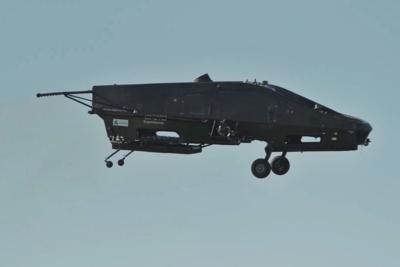Mon, Jan 27, 2020
Will Study Potential Uses For Piloted And Autonomous Light Aircraft
Boeing has signed an agreement with Israel-based Tactical Robotics to explore development of a ducted fan propulsion technology with potential uses for piloted and autonomous light aircraft.

Through a joint working group, the two companies will determine what opportunities may exist in developing, producing and marketing Fancraft-based vertical take-off and landing (VTOL) products, including the Cormorant. Due to its compact, Humvee-sized footprint, Cormorant can conduct emergency response missions such as delivering food, water and supplies during natural disasters or in combat environments. It can also carry up to four patients for medical evacuations.
“The relationship between Boeing and Israel goes back about 70 years, and during that period, Boeing has a long history of working in partnership with Israel’s technical and industrial sectors,” said Dennis D. Swanson, vice president, international sales, Boeing global sales and marketing. “This MoU with Tactical Robotics builds on Boeing’s commitment to developing and investing in innovative technologies that lead to safe, reliable aircraft around the world.”
Rafi Yoeli, CEO of Tactical Robotics’ parent company Urban Aeronautics, said, “Cormorant represents the first in a family of vertical take-off and landing aircraft that can fly and land where no other aircraft can. We can think of no better partner than Boeing to help us develop this product and utilize the Fancraft technology to its full potential.”
Aviation ducted fan technology uses a fan mounted in a cylindrical duct to produce thrust. This arrangement can efficiently enhance airflow velocity and pressure when compared to an open rotor. There are also notional safety advantages to the technology when compared to unshielded blades on traditional rotorcraft. Fancraft technology improves stability, payload, speed and endurance when compared to conventional ducted fan configurations.
(Tactical Robotics image provided with Boeing news release)
More News
From 2023 (YouTube Version): Legacy of a Titan Robert (Bob) Anderson Hoover was a fighter pilot, test pilot, flight instructor, and air show superstar. More so, Bob Hoover was an i>[...]
Get The Latest in Aviation News NOW on Instagram Are you on Instagram yet? It's been around for a few years, quietly picking up traction mostly thanks to everybody's new obsession >[...]
Aero Linx: B-52H Stratofortress The B-52H Stratofortress is a long-range, heavy bomber that can perform a variety of missions. The bomber is capable of flying at high subsonic spee>[...]
Altimeter Setting The barometric pressure reading used to adjust a pressure altimeter for variations in existing atmospheric pressure or to the standard altimeter setting (29.92).>[...]
"Knowing that we play an active part in bettering people's lives is extremely rewarding. My team and I are very thankful for the opportunity to be here and to help in any way we ca>[...]
 Classic Aero-TV: Remembering Bob Hoover
Classic Aero-TV: Remembering Bob Hoover ANN FAQ: Follow Us On Instagram!
ANN FAQ: Follow Us On Instagram! ANN's Daily Aero-Linx (05.15.24)
ANN's Daily Aero-Linx (05.15.24) ANN's Daily Aero-Term (05.15.24):Altimeter Setting
ANN's Daily Aero-Term (05.15.24):Altimeter Setting Aero-News: Quote of the Day (05.16.24)
Aero-News: Quote of the Day (05.16.24)



